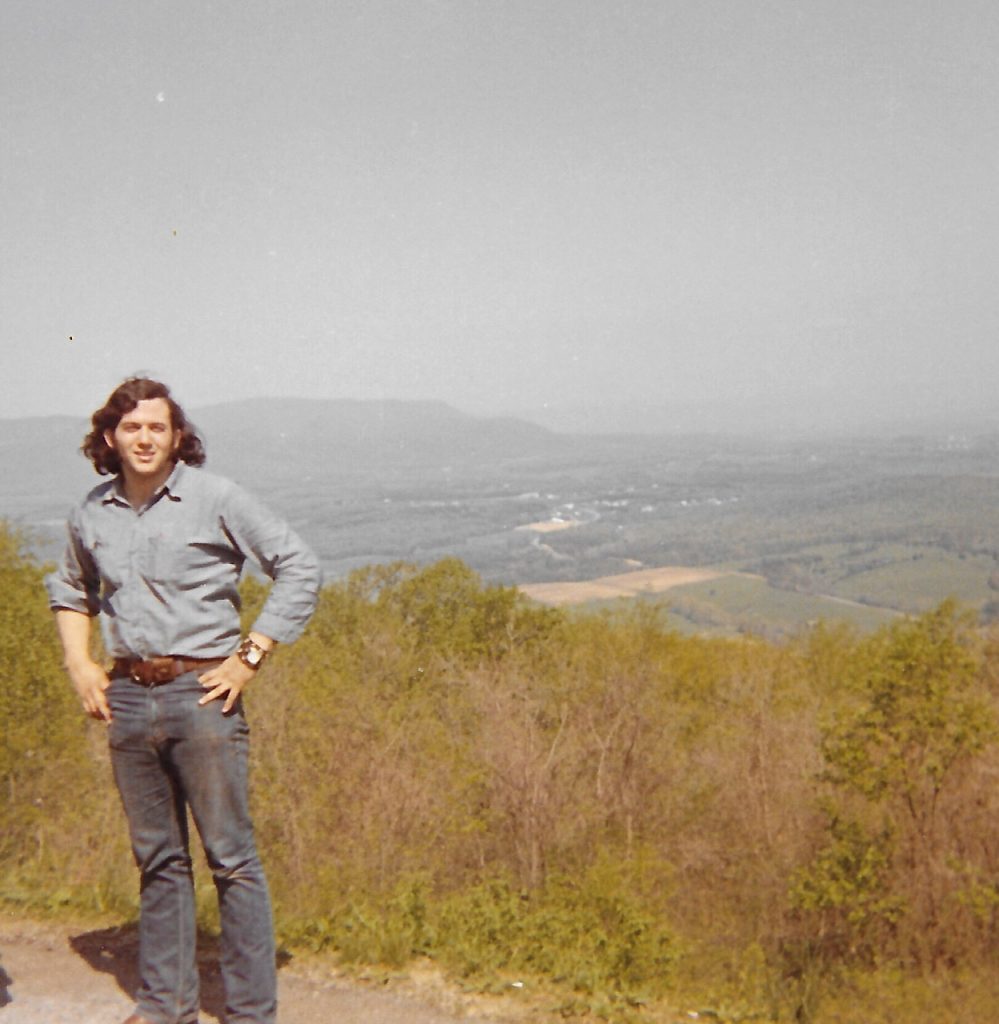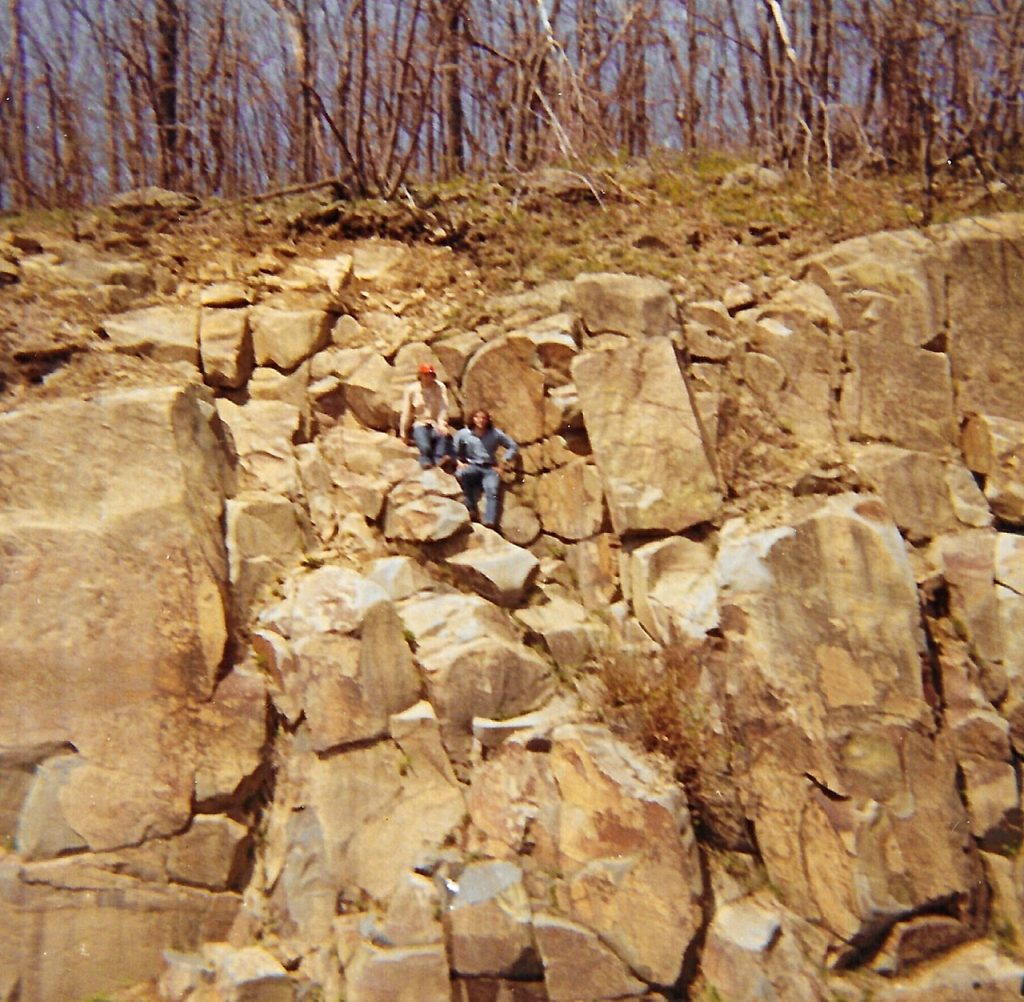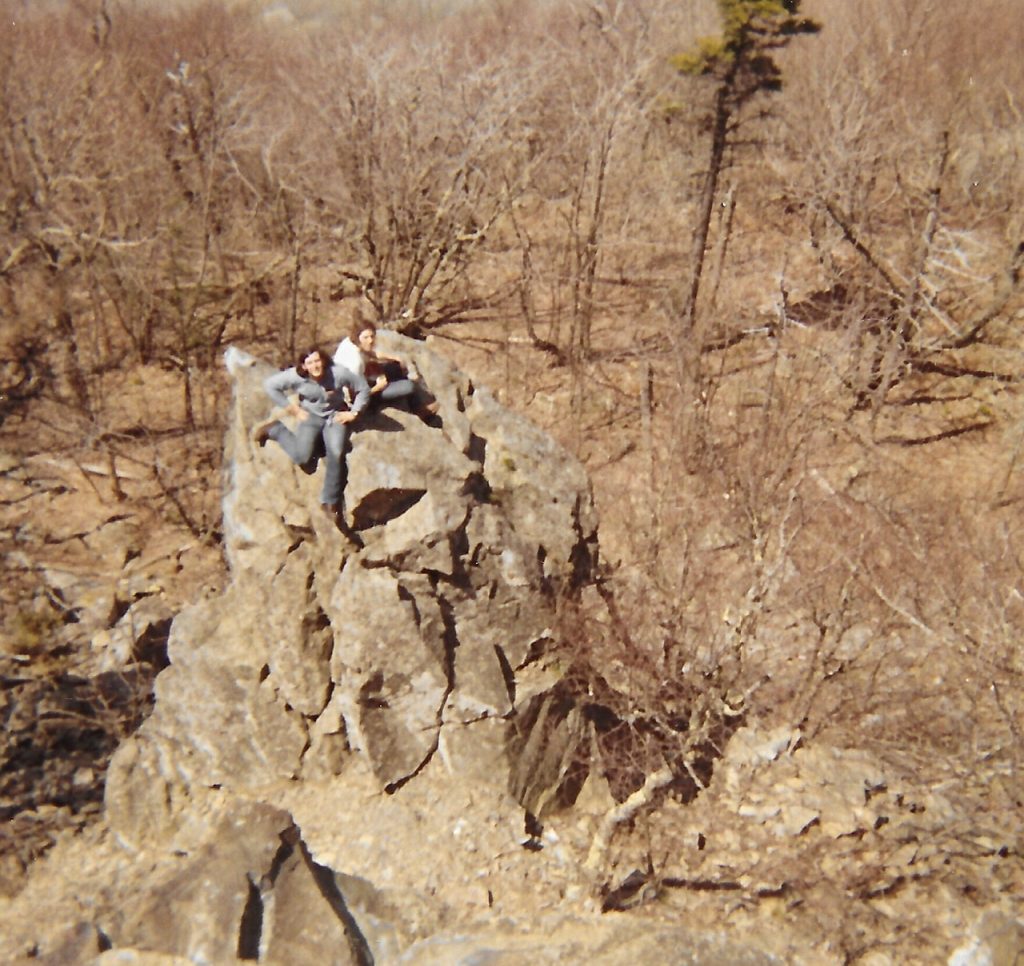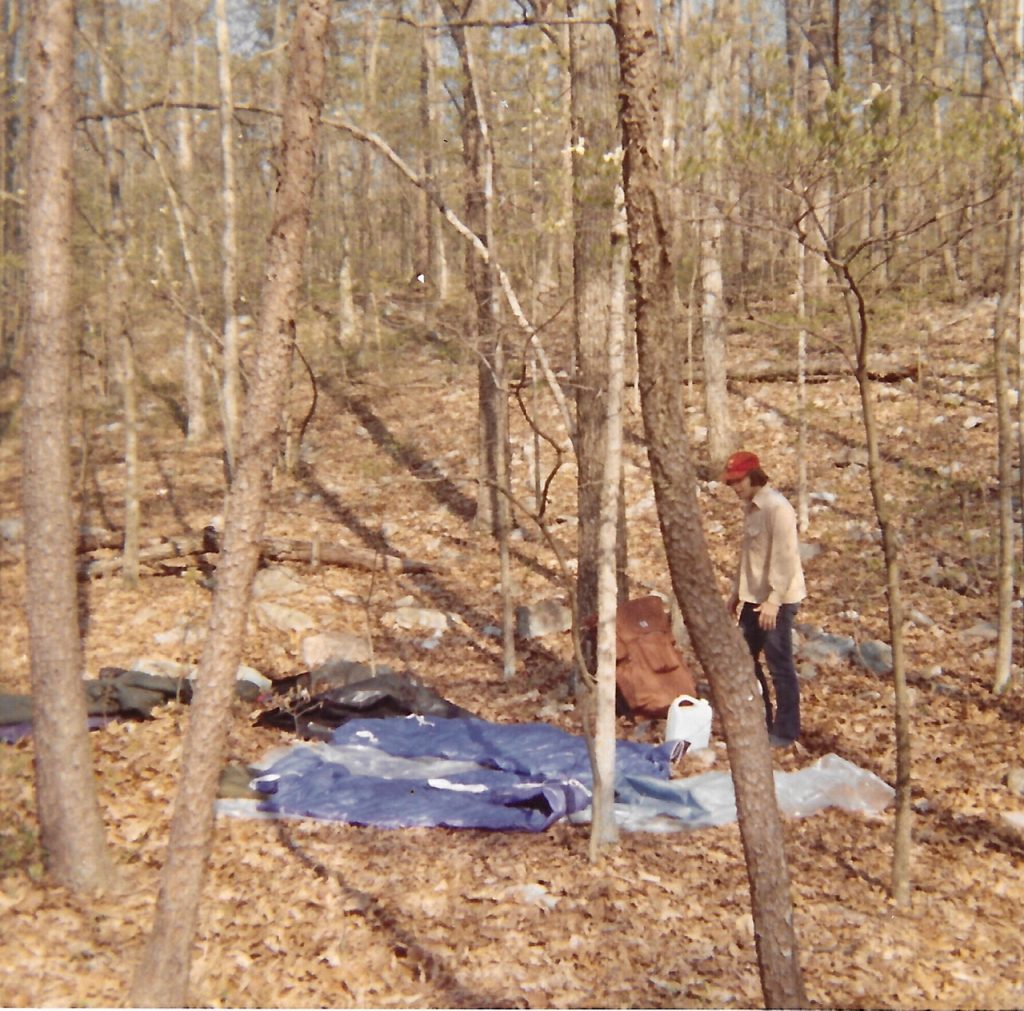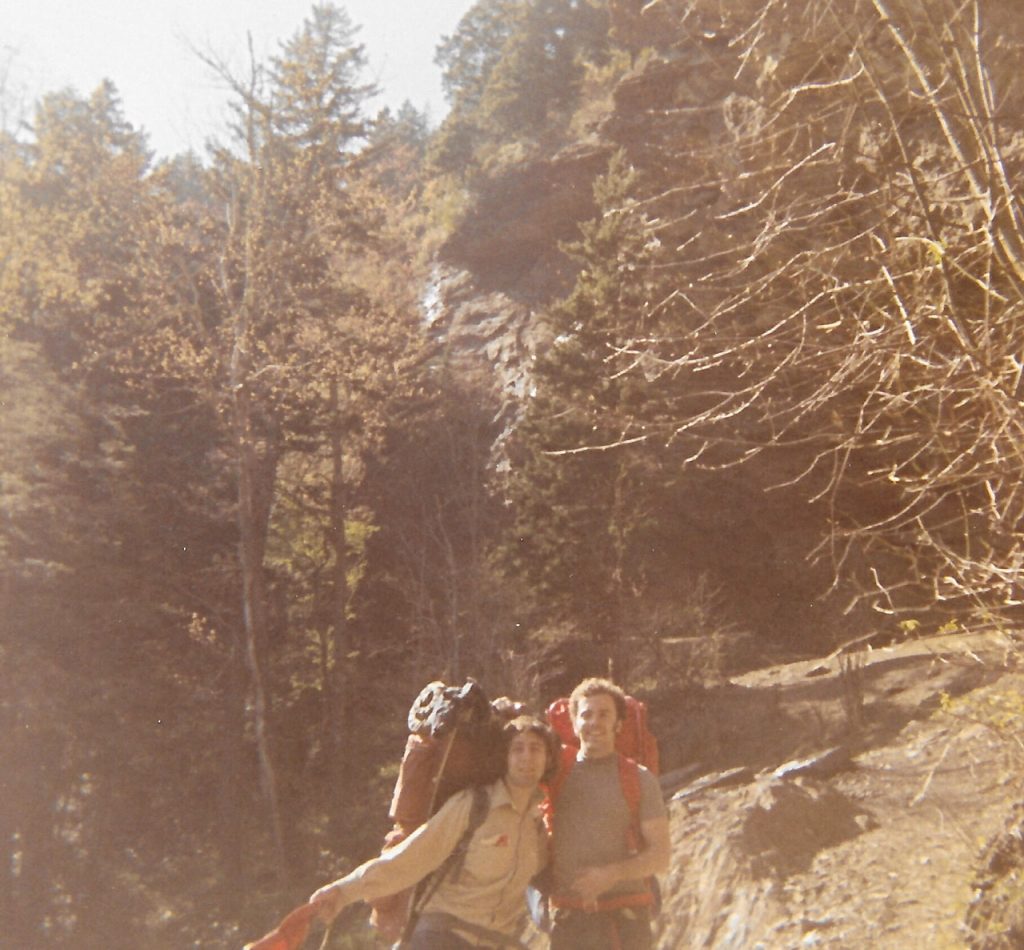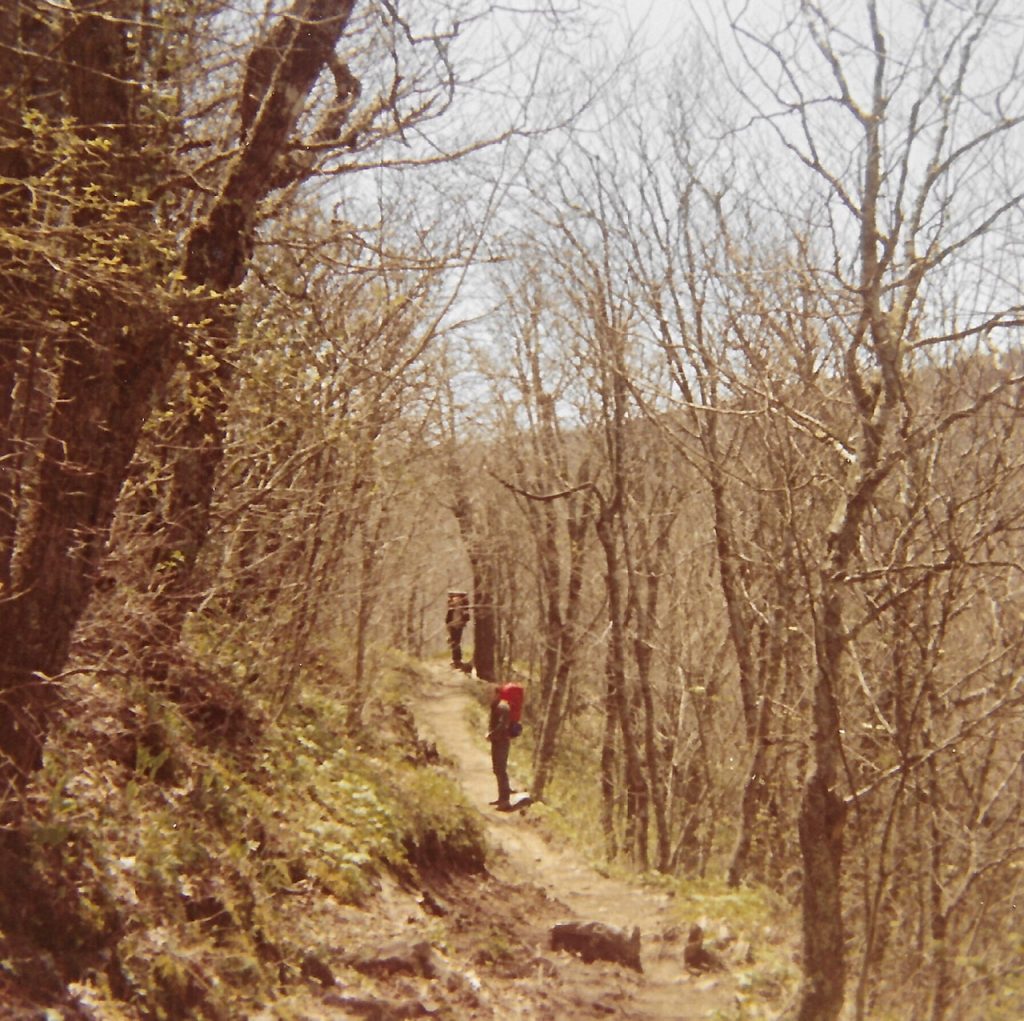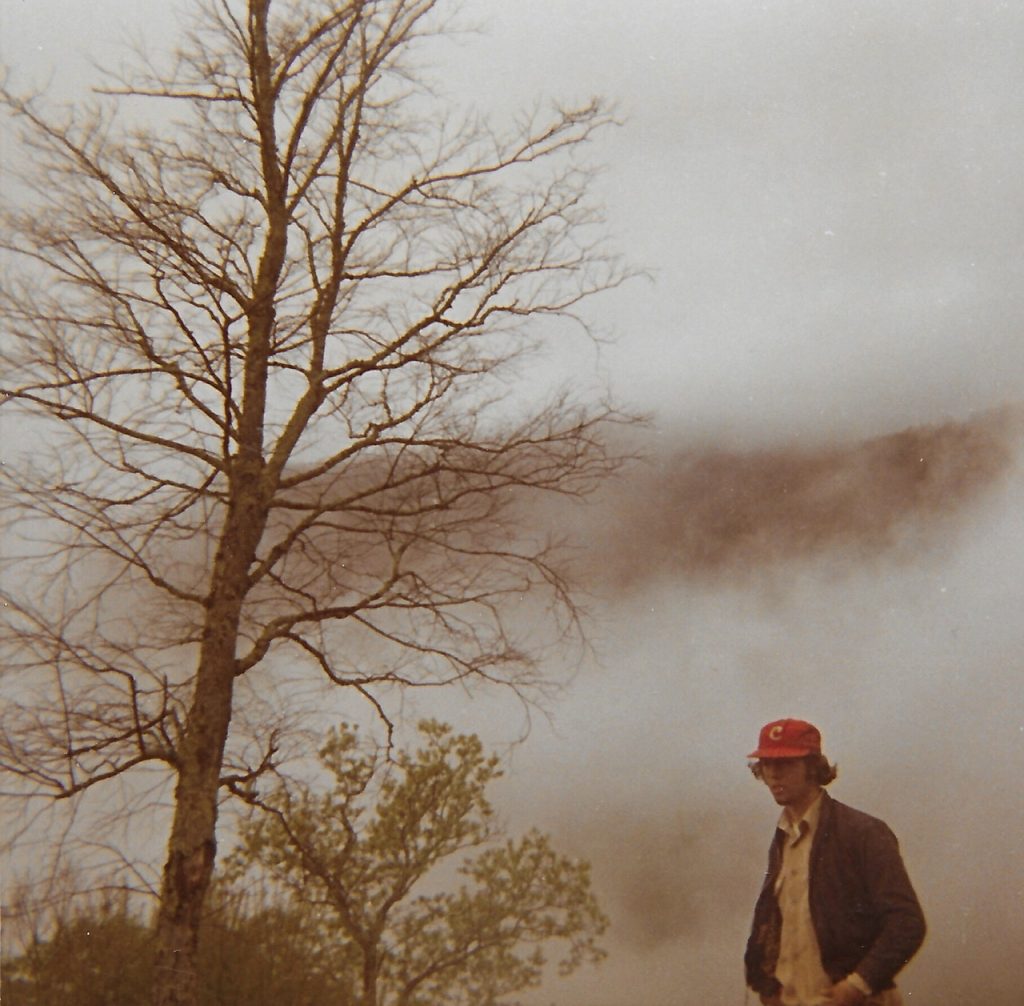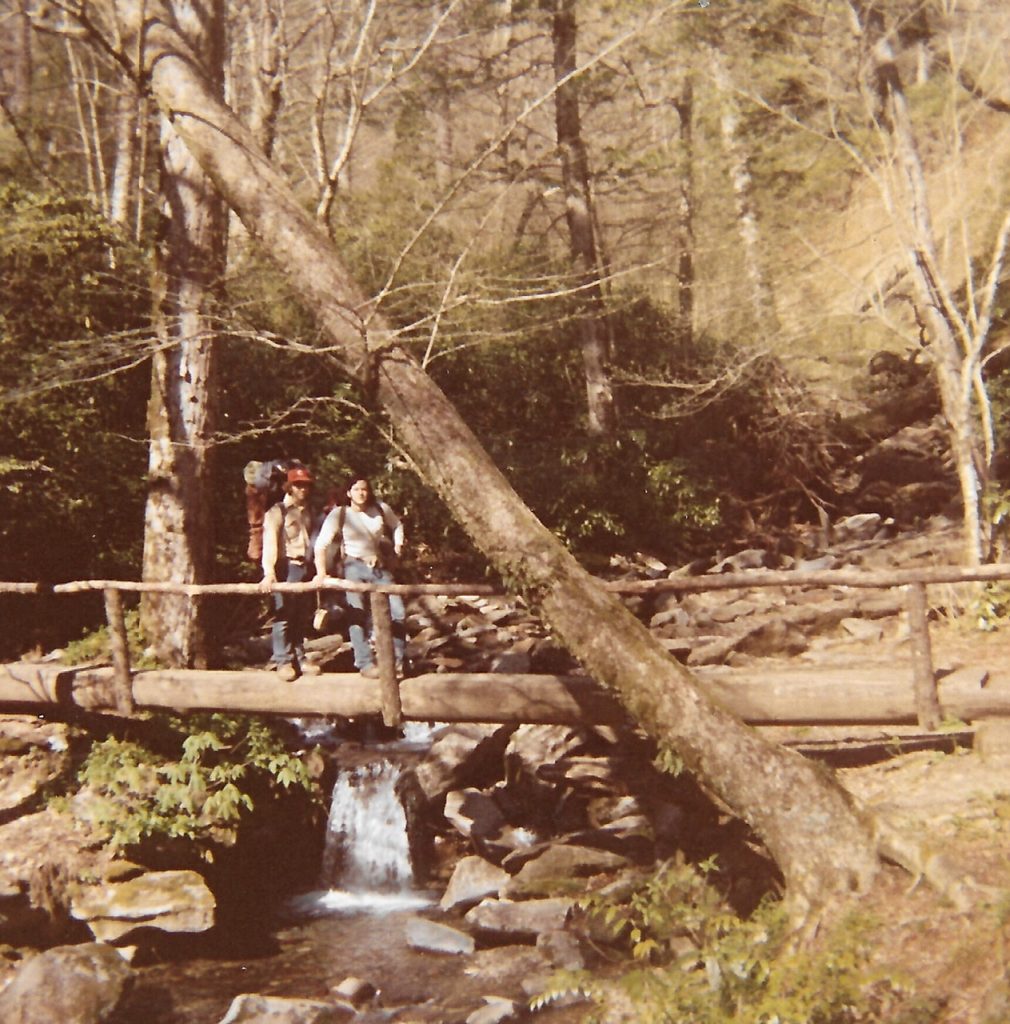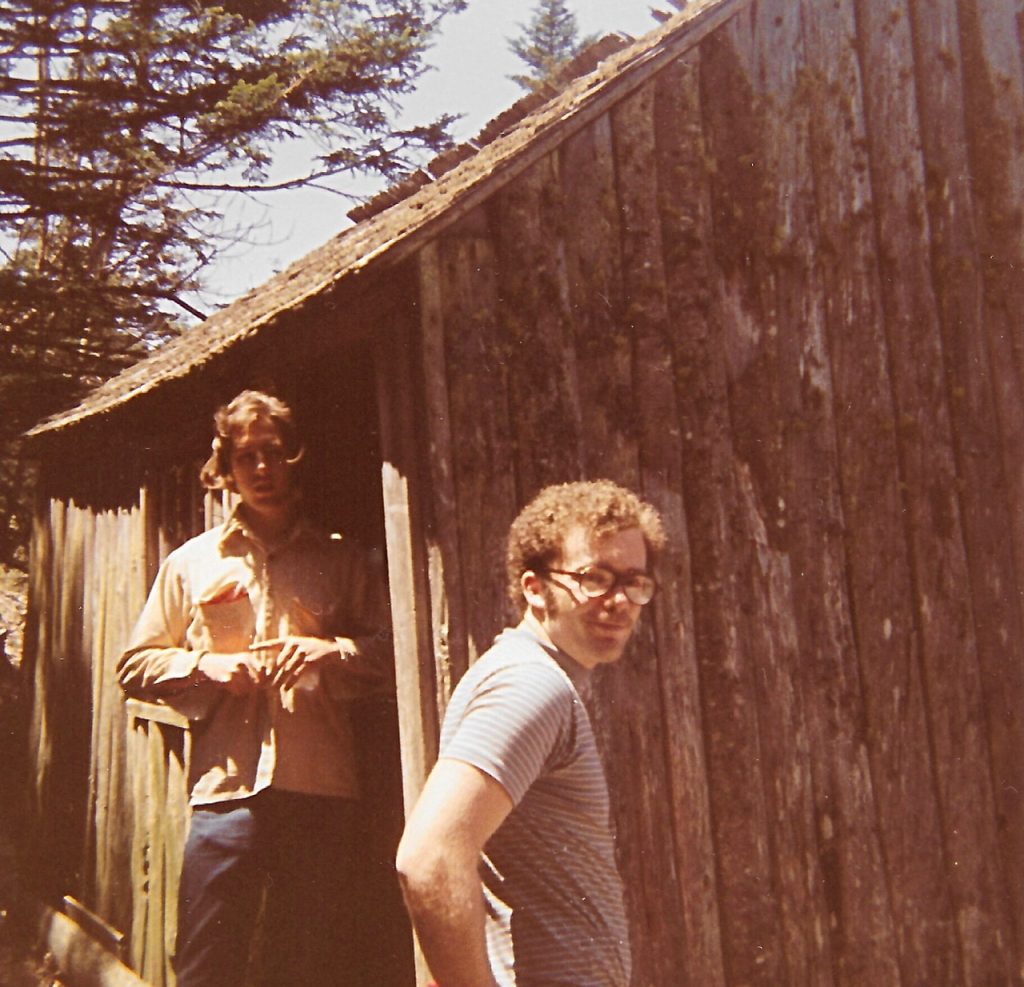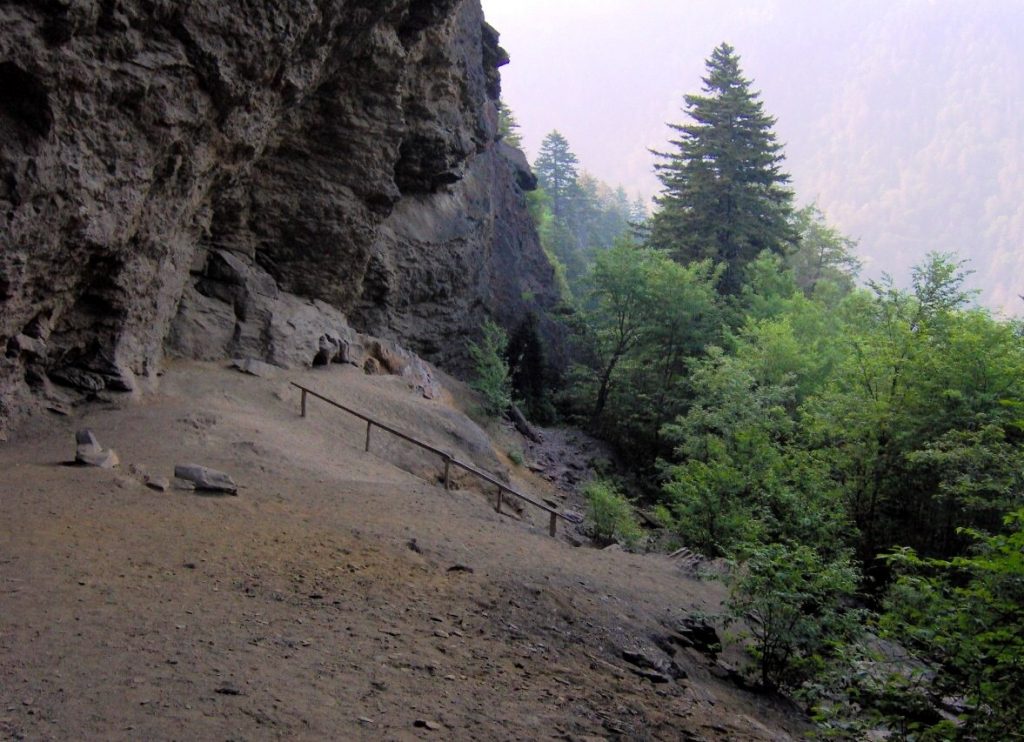ARTICLE INDEX
Looking back on some of my early adventures, they often unwind in my mind like a crazy dream. Vignettes of the experiences are at once vivid and are, at the same time, surreal. Occasionally, the memories seem downright improbable. I ask myself, “Did that really happen?” One of the most evocative recollections that I have is of occurrences from a 1972 trip from Michigan to the Great Smoky Mountains National Park. I had a Summer job commitment in my hometown of Coldwater, Michigan. I needed the money that the job would provide. However, after 2 semesters and my experiences in Montana the previous Summer, the thought of spending the Summer working in a warehouse felt like I was sentenced to spend time in the Gulag Archipelago.
I am not sure exactly where the idea of traveling to the Great Smoky Mountains National Park originated. It was a relatively short drive from Michigan and it was a popular destination for many of my acquaintances. One of those acquaintances must have planted the seed. Sometime in March 1972, Doug McLoud and I started discussing the idea. Backpacking in the southern mountains seemed a perfect escape before I had to start the job. Great Smoky Mountains National Park encompasses a high forested ridgeline at the south end of the Blue Ridge Mountains which, in turn, is part of the ancient Appalachian Mountain Chain. The Park sits on the border of Tennessee and North Carolina. In 1972, it was (and still is) the most visited National Park in the United States. The Appalachian Trail passes through the center of the park.
Traveling to the south for college kids raised many questions that only experience might answer. The South was not esteemed by many Northern college students. The Civil War was over. The Rebel Army was long ago disbanded. Yet the cause and residue of the war was still an ongoing battle. While the conflict was now transformed from battles fought between armies to an insidious use of the legal system to ensure White domination. Racism was still a hotly contested social problem in 1972. While it is still a battle being waged in 2020, it was an issue front and center on college campuses.
In 1972, I was acutely aware of the severity of the conflict as well as the gruesome events surrounding resistance to the Civil Rights movement. From the resistance to school segregation brought on by the Brown vs. Board of Education Supreme Court decision to freedom marches, to the Jim Crow system, to bombings and burning of Black churches, to the assassination of Martin Luther King, we were well aware of the continuing strife. These were current events that formed our impressions of the South.
Those of us coming of age in the 1960s were witnesses to the ongoing quasi-Civil War. While Northerners did not acknowledge the racial injustice perpetuated in the north, we believed that the South was a place of ongoing and persistent racism. Thus, it was with some trepidation that I decided to join my 2 friends to head south. It was, after all, only 11 years since the Freedom Riders (groups of White and African American civil rights activists) engaged in bus trips through the South to protest segregation. They were confronted by police officers, violence from White protesters and, in several instances, death.
The Three Amigos
I met Doug in September 1971 in my Botany-Zoology 201 class. We were sitting in the Natural Science Building auditorium in the back row. It was my first day of classes at the University of Michigan. The lecture hall was packed. I was sitting next to a guy with tight curly hair, glasses slipping down his nose and a pencil behind his right ear. “Can I borrow some paper?” he asked. “Just back from Montana last night, didn’t have time to get a notebook.” So began my curious friendship with Doug.
Doug is undoubtedly one of the most, if not the most enigmatic characters that I ever met. He was at once brilliant and chaotic in his thinking, kind and unreasonable, intellectual and persnickety, red neck and liberal. Doug and I had spent time together in Montana in 1971 but that is another story. I met Jay through Doug. Doug wanted to put together an intramural softball team. He asked me to play and said that he would take care of everything.
I arrived at the first scheduled game to find that Doug had designated me the Captain and that he had only managed to sign up a total of 5 players. At least he showed up. After we forfeited, Doug came up with a variety of reasons exculpating himself from blame. He promised that we would have a full team for our next game 2 days later. Jay was the first of the new players to arrive at the next game. Jay was from a rust belt town south of Pittsburgh. His Dad was a Judge. Thanks to having absolutely nothing in common, we became great friends.
The Plan
Jay, Doug and I planned to head for the Smoky Mountains to backpack as soon as final exams ended in the first week of May. Doug talked his Dad into lending us his car. I met Doug at his house. Five minutes after we left his parents house, he stopped the car and unhooked the odometer. He didn’t want his Dad’s car to register the miles we were traveling but he was never clear why. We drove to Jay’s parents’ house south of Pittsburgh. Jay’s parents welcomed us. They were supportive of our endeavor. Jay’s mother insisted on serving us a steak dinner. I had never eaten so much steak. Gorged, we piled into the car and headed for the north end of the Blue Ridge Parkway.
Virginia Water Gap
Arriving after midnight at the north end of the Blue Ridge Parkway, we asked a gas station attendant where we could camp. He directed us to a nearby forested hillside park where we found dozens of parked cars. People were literally camping and sleeping anywhere that there was a flat spot. We found a spot, threw our sleeping bags down and tried to fall asleep. It was like a mini-Woodstock with some people talking in small groups, some people sleeping, some smoking dope and a few simply staring into the darkness.
Despite the constant murmur of the campers, I managed to drift off into a fitful sleep. Sometime later I woke to the sound of a terrible, indescribable screeching. My imagination couldn’t put an identity to the source of the sound. What was it? Was it dangerous? Didn’t anyone else hear it? Was it man or beast? Finally, after 20 minutes or so I said, “Do you guys hear that?” “Thank God,” Jay responded, “I thought I was the only one awake.” Doug joined in the conversation but there was no consensus as to what type of creature was making the sound. After an hour or so, the screeching ended and we drifted off to sleep.
The Parkway
The Blue Ridge Parkway is both an amazing engineering feat and a work of art. The Parkway traverses 469 miles of the rugged Appalachian Mountains of Virginia and North Carolina. In Virginia, the road alternated between traversing wild, empty country and populated farm land. The Appalachian Trail parallels the road. The scenery was captivating as we followed the Parkway south.
J. Edgar Hoover
We were nearing Asheville, North Carolina when a radio announcer proclaimed solemnly that the great American patriot J. Edgar Hoover had passed away. It was common knowledge at the University of Michigan that the FBI was a mortal enemy of progressives. Rumors of FBI shenanigans on the campus were a constant subject of protests. Needless to say, the 3 of us felt no sadness in hearing this news. The announcer continued to praise Hoover and invited listeners to call in and comment.
Suddenly, Doug pulled over at a pay phone. “I got to make a call,” he said. Moments later, Doug was on the radio talking in his best phony Southern accent. He recounted a string of well known (at least to us) FBI abuses of civil rights. He was quickly cut off. He came back to the car, didn’t say a word and we drove away. The next caller wanted to know why the announcer let that “Commie pinko besmirch a Great American.”
Deliverance
At least in my mind, the South was (in addition to a land of White Supremacy) a backward land of rednecks. The movie “Deliverance” was popular and all 3 of us had expected that our southern travels we would encounter rednecks and that our longish hair might be a problem. However, most Southerners treated us politely. Driving toward Asheville, North Carolina on an old highway that paralleled the Interstate, we did see a hand-painted sign with an arrow pointed up a rutted road. The sign proclaimed I-40. Doug said, “I pity the fool who tries to get to the freeway up that road.”
Freedom of the Hills
We took several hikes as we made our way down the Parkway but it wasn’t until we got to Smoky Mountain National Park that we took our first backpacking trip. We hiked along the Appalachian Trail through forests and across grassy ridges. The day was perfect, sunny and warm. I remember a spirited discussion about school desegregation and the long-term effects that it might have on the south. As young, idealistic college students, we concluded that it would eventually make things better.
The Park Service maintained large log shelters along the trail. These shelters were 3-sided. The 4th side was a chain-link fence. Inside were a series of bunks. When we arrived at the Mount Collins Shelter, we found that all the bunks were taken. In fact, the area was swarming with campers. We found a nearby spot to camp. At that point of our lives, we were all too short of money to own a tent. We didn’t even have sleeping pads. We bedded down with a plastic sheet which served as a ground cloth. Sometime in the night, I awoke to a steady rain. I wrapped the plastic sheet around me and waited for dawn. It was a long wait. It was still raining at dawn. Doug and Jay were still asleep wrapped in their plastic cocoons. I stuffed my drenched sleeping bag into my pack. I took my stove, a water bottle and bag of food into the shelter. There were people up and moving around but most of those lucky enough to have secured a bunk were still curled up in their sleeping bags.
I fired up the stove to boil water for hot chocolate. Just getting out of the rain was an improvement, causing my spirits to rise. Then I started talking with a gal who came through the door. She was fully attired with a rain jacket and pants. Smiling, she commented on the weather. I found that she was also a University of Michigan student. She was hiking with 2, still-sleeping girlfriends. My juvenile mind was considering the carnal possibilities as I shared my hot water and cocoa with her. She went to her bunk and got a bag. She then hung a mirror and started to put makeup on. Who wears makeup while backpacking? I looked outside. Jay and Doug were standing outside looking at me. “Let’s go.” Just like that my carnal fantasy evaporated.
Fish, Watermelon and Bear Stories
We spent the next night in a Gatlinburg motel, drying our wet gear. I am still not sure how we talked Doug into springing for the $6 room. My guess is that Jay and I paid for it. The next day, we checked the weather forecast which included a good chance of showers. We still had time for 2 more days of hiking. We discovered that we could reserve a cabin at the backcountry lodge on Mount LeConte. So we planned a trip to the lodge for our last night out.
Ever since arriving at the Park, we had heard reports of a bear that was chasing backpackers away from their packs. These reports were always second- or third-hand. The last report was from a guy we met at the trailhead. He was a local guy who was fishing in the stream. He had already far surpassed the catch limit. Doug offered him half of a watermelon. He offered us fish. The 4 of us then shared lunch. Talking about the renegade bear rumors he said, “These Northern kids are scared of bears. The bear knows this. He stands on the trail. They drop their packs and run away. He rips the pack open and eats his lunch.”
I figured he was (just like everyone I met in Montana the year before) taking great pleasure in telling people about bears. Doug shared a few Grizzly stories and his opinion that black bears were just big raccoons. Based on the bear rumors and the lunch conversation, I half expected to meet a bear on our hike to Mount LeConte. The mythical bear was beginning to sound like the Moby Dick of the mountains. Arriving safely at the lodge, we found that the cabin we had reserved was anything but luxurious. Nevertheless, it was dry and warm. When the rain started, we were pleased.
How Much Did He Charge You?
The next day was our last and we had a 7-mile hike ahead of us. It was mostly downhill. The highlight of the trip down the forested mountain would be a stop at Alum Cave. The weather had temporarily cleared as we set off. A mile down the trail, I was walking maybe a hundred yards ahead of Jay and Doug. I came around a corner. Standing 50 feet ahead of me square on the trail was a bear. I stopped. “How cool,” I thought. I finally get to see a bear. Jay and Doug, arguing good-naturedly, came walking up. “Look–a bear” I whispered.
“Wow, cool,” Jay said. We stared at the bear. The bear stared at us. “We’ve got to make tracks,” Doug said. At that time, it was common knowledge that black bears could be easily scared away by humans—just yell and act aggressive. So we raised our arms and yelled “Hey bear, get!” We stomped our feet. Our effort sure got the bear moving. It charged toward us. We didn’t stand our ground. Turning around, we ran up the trail and around the corner. Breathing heavily, we stopped. Soon the bear came walking around the corner toward us. Without a word spoken, we turned around and ran up the trail until we were once again out of breath. The bear followed us.
The bear finally moved off the trail. It was now 30 feet from us and 20 feet above the trail. We started to go down the trail. The bear immediately hopped down on the trail and started slowly toward us. Once again, we ran up the trail. This time we stopped on a rocky corner. “He wants our backpacks. What we heard was true,” I said. “I just bought this pack. It cost me 50 bucks. I’d go back to the lodge before I let the bear have it,” Jay retorted.
Doug (who had grown up in Montana) said, “You don’t run from black bears.” Doug picked up a log. “You guys follow me.” He started down the trail. At the corner, Doug and the bear met head on. It was hard to tell which one was more startled. Doug jumped up and banged the end of the log on the ground in front of the bear’s nose. Jay and I were yelling, “Get, bear, get!” The bear jumped backwards and retreated a short way up the slope. We ran down the trail.
Remembering from all the Tarzan movies I had watched as a kid, the last person in line was always the victim, I passed Doug and Jay. Evidently, they had watched the same movies as we kept passing each other for the next half mile. After deciding that the bear was not following us, we slowed to a walk. Adrenaline provides a good high but when it burns out, you really hit bottom. We slowly made our way for the remaining distance to Alum Cave. Although it was a highly-touted feature, the cave turned out to be simply a big bluff rather than a true cave.
We stopped to eat a snack. Soon an improbable vision appeared. A small, old, grey-haired man in a full yachtsman’s uniform slowly approached us. Think of Thurston Howell III from the Gilligan’s Island TV show and you will have a good idea of what confronted us. “How far are we from the ocean?” Jay chuckled. “Is this Alum Cave?” the commodore asked. We breathlessly, all at once, started telling him the story of the bear charging us. With a smirk, the commodore asked, “How much did he charge you?”
The Biggest Show in Town
Driving back to Pennsylvania, we stopped in a small Tennessee town to eat lunch at a Dairy Queen. The place was nearly full. While we were eating our food, we heard sirens and then police cars, a fire truck and an ambulance screamed by the restaurant. Engrossed in our burgers, it took us a while to realize that we were now alone. Everyone who was in the dining area had suddenly gone. It seemed a bit strange.
On the road again, just past the outskirts of town, we encountered stopped traffic. There were dozens of cars parked along the road. People were adding to the congestion by walking up the road. It was clear that there was an accident up ahead. Jay was driving and Doug was sitting in the back seat, his window down. Doug, once again using his phony Southern accent, asked one of the people we passed, “Anybody dead?” “Yes, sir,” was the response. “You can be sure of that.” It turns out that a cement truck and a VW Bug had met head-on on the 2-lane road. As we crawled ahead, we could see (through the crowd of bystanders) the cement truck down the embankment on top of the Bug.
NEXT: The Way West 1972, Arizona, California, Idaho, Montana
